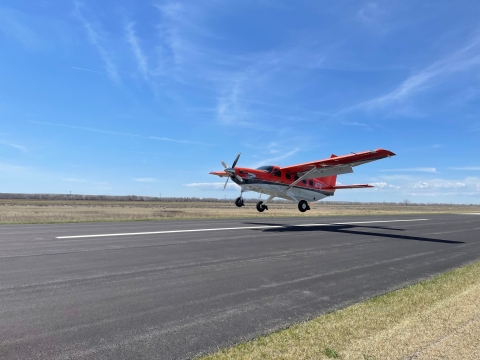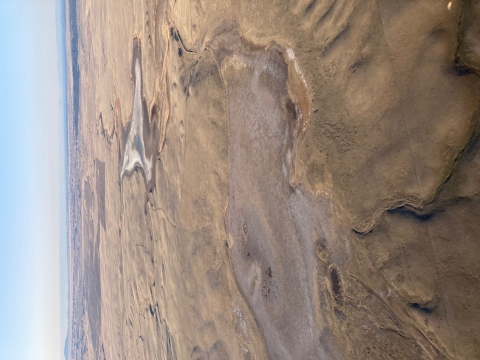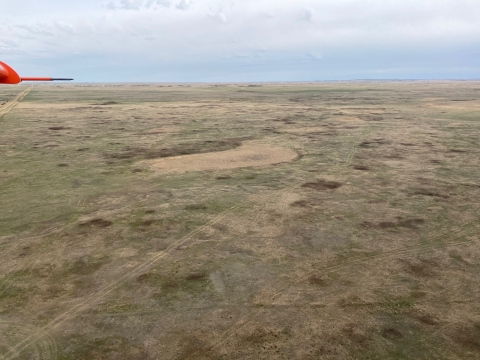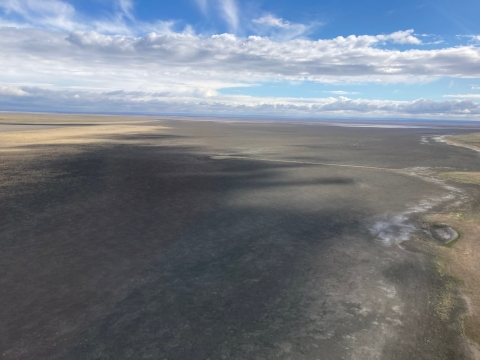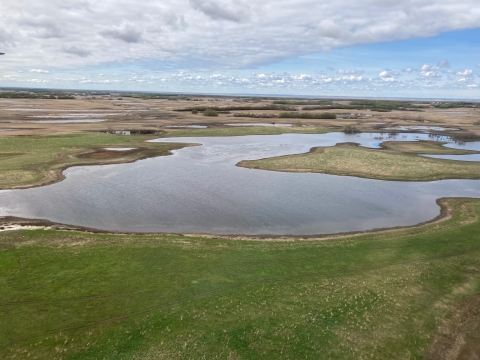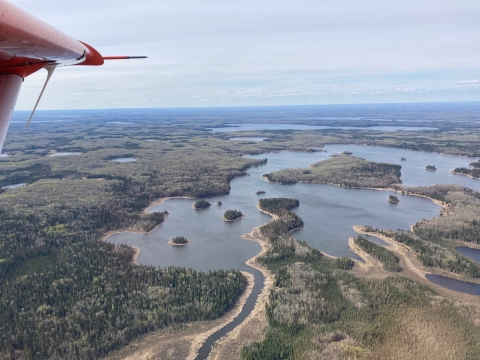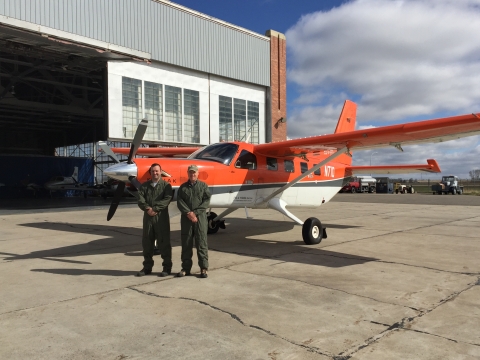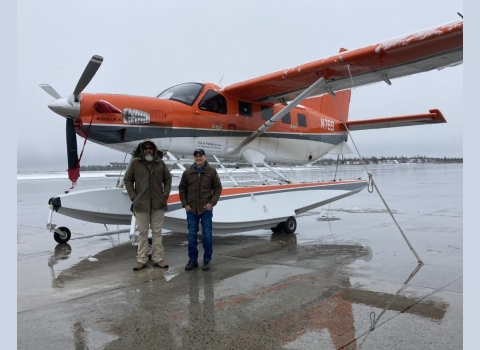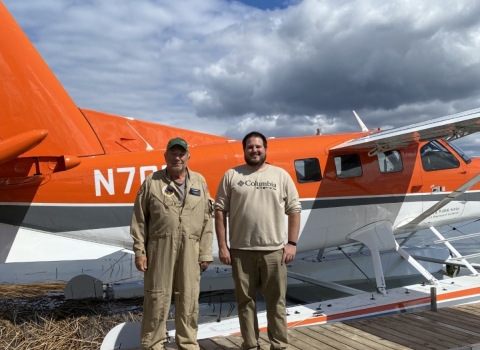My observer, Joe Sands, and I arrived in Malta, Montana at the end of April to start this year’s Waterfowl Breeding Population and Habitat Survey. We spent the first day looking at habitat conditions, the types of species that were there, and to determine nesting timing. After we drove and investigated the wetlands, we determined that the timing was right to start the survey as all species were present and we had nearly a 1:1 ratio of mallard drakes to pairs. If there are too few single mallard drakes compared to pairs, you are too early, and if there are too many single mallard drakes compared to pairs you are late. On our first flight, we immediately noticed how dry conditions were in Montana north of the Missouri River.
Many of the natural wetlands were dry, stock ponds were less than 20% of capacity, and there were few temporary wetlands present. We saw the same thing across most of eastern Montana where the drought continued from 2021. Some of the areas near the Rocky Mountain foothills and near the border with North Dakota improved somewhat, but overall they still lacked the precipitation needed to create good nesting and rearing conditions for waterfowl.
The poor habitat conditions persisted as we moved north into southern Alberta where annual precipitation was only 40% of what it normally should be. Generally, we counted few wetlands and waterfowl in the areas south of Calgary. Pakowki Lake, which is typically a waterfowl hot spot located in southeastern Alberta, was almost dry.
The consolation prize for the lack of ducks we saw in Eastern Montana and Southern Alberta was the magnificent scenery as well as the wildlife we were able to observe from 150 feet off the ground. Near Glacier National Park I witnessed a couple of grizzly bears stalking elk in a river bottom. We did not stick around to see the conclusion, but the two bears were working together, crawling low with their bellies on the ground and had closed to within 100 yards of the elk. I tried to point them out to Joe, but he missed them. Sorry Joe! We saw many antelope, deer, elk, bison, coyote, moose, and black bear.
As we moved north, wetland condition and counts of waterfowl continued to improve. North of Edmonton, precipitation was about normal over the past year and we observed good wetland habitat and counts of birds until we finished the survey north of Grand Prairie.
It was a great survey and thanks to Joe for making my job easier and for being a great observer and traveling partner. See you next year!


